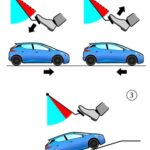Slide 1. Introduction.
The class develops why advanced driver assistance systems can trigger electric vehicle insurance and the implications for fleet management.
Slide 2. Electric vehicle insurance and ADAS.
- Electric vehicle insurance and ADAS.
The technological revolution in the automotive sector has brought with it a new generation of vehicles equipped with sensors, cameras, and advanced driver assistance systems (ADAS). Although these features improve safety, they are also causing a considerable increase in insurance prices, especially for electric cars.
According to a recent study by the insurance company AXA, vehicles equipped with ADAS can increase the cost of insurance by up to 40% compared to equivalent models without this technology. The main reason: higher repair costs due to the sophistication of the integrated sensors and cameras, often located in exposed areas such as bumpers, windshields, or rearview mirrors.
- What are ADAS systems and why do they make insurance more expensive?.
ADAS-Advanced Driver Assistance Systems technologies include features such as autonomous emergency braking, lane keeping, adaptive cruise control, and pedestrian detection. More and more electric models, from compact cars to SUVs, are incorporating them as standard or as part of optional packages.
These systems rely on a network of sensors, cameras, and radars that collect real-time data to prevent accidents. However, in the event of a collision, even a minor one, replacing these components is very expensive.
For example, a camera located on the windshield can cost between $600 and $1,000, not including subsequent calibration. A front radar, common in autonomous braking functions, can add another $1,200 to the bill. A simple bump to the bumper, where proximity or blind spot sensors are located, can cost more than $2,000 to repair.
According to the comparison site Rastreator, this type of repair has led to an average increase of 25% in insurance policies for electric cars with advanced ADAS over the last two years.
- What about electric cars?.
Electric cars not only incorporate ADAS systems more frequently, but also use more specific parts that are less readily available, which also increases repair time and the final cost. This directly affects insurance calculations, which are based on risk assessment and potential expenditure.
In addition, electric vehicles tend to have greater power and instant acceleration, which can pose a greater risk in urban driving if not managed properly. All of this translates into higher premiums for certain driver profiles.
A report by Mapfre reveals that the average cost of insuring an electric car in Spain has risen from €400 in 2021 to around €520 in 2024, with peaks of up to €700 per year for high-end models with full ADAS technologies.
Popular electric models such as the Tesla Model 3, Volkswagen ID.4, Hyundai Ioniq 5, and Kia EV6, which include numerous standard driver assistance features, are among those that may see this increase reflected in their policies.
Even in mid-range models, such as the Renault Mégane E-Tech and MG 4 Electric, the presence of 360º cameras, perimeter sensors, and autonomous braking systems is influencing insurance premiums.
- Implications for fleet management.
The incorporation of technology in electric cars is transforming safety and the driving experience. However, it also adds a layer of complexity and costs that not all fleets anticipate, especially in the area of insurance.
It is recommended to use ADAS systems to increase the safety of the vehicle, the driver, users, pedestrians, and cyclists.
In my experience, fleets do not usually incorporate safety equipment in vehicles because of the cost, but there are many advantages: they prevent many accidents, repairs, vehicle downtime that cannot be used for service, and injuries and absences of drivers and vehicle users.
ADAS systems can be used as a competitive advantage to differentiate ourselves from our competitors, because the vehicles have high safety features to prevent accidents.
In a fleet of vehicles, the incorporation of ADAS systems should reduce the insurance premium because there is less risk or fewer accidents.
Below are some recommendations for lowering the insurance premium or preventing it from skyrocketing.
Before purchasing a vehicle with advanced ADAS systems, it is advisable to carefully analyze how much your insurance premiums may go up or down and what coverage each company offers. What is a technological advantage today may be an unexpected cost tomorrow.
- There are many ADAS systems available as options, so you should choose those that are really useful for your vehicles. Before installing them, it is advisable to carefully analyze how much your insurance premiums may go up or down. Ask drivers which ones they recommend based on their experience.
- Find insurance companies that lower insurance premiums for the use of ADAS systems, or find out which ADAS systems lower inurance premiums and incorporate them into vehicles.
- Compare insurance companies. Some insurance companies already offer special rates for electric vehicles.
- Avoid high deductibles if the car has many sensors. A partial repair can easily exceed the usual deductible.
- Use specialized repair shops that reduce the cost of sensor calibration after an accident, or if you have your own repair shop, train your employees to do it in-house.
Slide 3. Thank you for your time.
The class has developed why advanced driver assistance systems can trigger electric vehicle insurance and the implications for fleet management, see you soon.
Download the audio




















